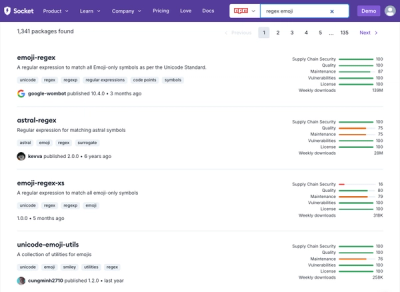ngx-picture
An Angular library to help properly size, lazy load images, and use next generation formats.
Help improve app performance and fix those Lighthouse opportunities:
- Serve images in next-gen formats
- Properly size images
- Defer offscreen images
Ready made configurations available for:
For live demos:
Install
npm i --save ngx-picture
ng add @angular/cdk
Configure
Import NgxPictureModule into app.module.ts and call forRoot suppyling the config.
import { NgModule } from '@angular/core';
import { BrowserModule } from '@angular/platform-browser';
import {
DEFAULT_BREAKPOINTS,
ImageFormat,
NgxPictureModule
} from 'ngx-picture';
import { AppComponent } from './app.component';
export function srcInterpolator(
url: string,
imageFormat: ImageFormat,
breakpoint: string,
breakpointValue: number
) {
return `${url.split('.')[0]}-${breakpointValue}.${
imageFormat === 'jpeg' ? 'jpg' : 'webp'
}`;
}
@NgModule({
declarations: [AppComponent],
imports: [
BrowserModule,
,
NgxPictureModule.forRoot({
breakpoints: DEFAULT_BREAKPOINTS,
imageFormats: ['webp', 'jpeg'],
srcInterpolator
})
],
providers: [],
bootstrap: [AppComponent]
})
export class AppModule {}
* Image formats must be in order of precedence. In this example if webp s supported it will be used.
Using the bundled configurations (Cloudinary, ImageKit and GraphCMS)
import { NgModule } from '@angular/core';
import { BrowserModule } from '@angular/platform-browser';
import {
DEFAULT_BREAKPOINTS,
ImageFormat,
NgxPictureModule,
CLOUDINARY_CONFIG
} from 'ngx-picture';
import { AppComponent } from './app.component';
@NgModule({
declarations: [AppComponent],
imports: [BrowserModule, NgxPictureModule.forRoot(CLOUDINARY_CONFIG)],
providers: [],
bootstrap: [AppComponent]
})
export class AppModule {}
Using the ngx-picture component
<ngx-picture
src="assets/images/banner.jpg"
alt="test"
[lazyLoad]="true"
></ngx-picture>
If lazyLoad is true the component will use an IntersectionObserver (if it is supported by the browser) to only render the picture element if the component is in view.
*Remember to import the NgxPictureModule into the relevant module.
Advanced configuration
Changing the breakpoint value type and srcInterpolator
NgxPictureConfig is generic so you can change the brreakpoint values to anuthing required in the srcInterPolator function. This example is using the Angular CDK breakpoints for the breakpoint keys.
import { Breakpoints } from '@angular/cdk/layout';
export interface Dimensions {
h: number;
w: number;
}
const ngxPictureConfig: NgxPictureConfig<Dimensions> = {
breakpoints: {
[Breakpoints.XSmall]: { h: 10, w: 10 },
[Breakpoints.Medium]: { h: 100, w: 100 },
[Breakpoints.Large]: { h: 200, w: 200 }
},
imageFormats: ['webp', 'jpg'],
srcInterpolator: (
url: string,
imageFormat: ImageFormat,
breakpoint: string,
breakpointValue: Dimensions
) => `${url}/w:${breakpointValue.w}/h:${breakpointValue.h}`
};
export function srcInterpolator(
url: string,
imageFormat: ImageFormat,
breakpoint: string,
breakpointValue: number
) {
return `${url.split('.')[0]}-${breakpointValue}.${
imageFormat === 'jpeg' ? 'jpg' : 'webp'
}`;
}
@NgModule({
declarations: [AppComponent],
imports: [
BrowserModule.withServerTransition({ appId: 'serverApp' }),
BrowserAnimationsModule,
MatButtonModule,
MatCardModule,
MatListModule,
NgxPictureModule.forRoot(ngxPictureConfig)
],
providers: [],
bootstrap: [AppComponent]
})
export class AppModule {}
Changing the image template
To use a custom img element provide an ngTemplate called #imgTemplate.
<ngx-picture
src="assets/images/banner.jpg"
alt="test"
[lazyLoad]="true"
#picture
>
<ng-template #imgTemplate let-imageData>
<img class="custom-template" [src]="imageData.src" [alt]="imageData.alt" />
</ng-template>
</ngx-picture>
The data context for the template is:
{
src: string,
alt: string
}
Example of rendered element
<picture>
<source
srcset="assets/images/banner-300.webp"
media="(max-width: 599.99px)"
type="image/webp"
/>
<source
srcset="assets/images/banner-600.webp"
media="(min-width: 600px) and (max-width: 959.99px)"
type="image/webp"
/>
<source
srcset="assets/images/banner-960.webp"
media="(min-width: 960px) and (max-width: 1279.99px)"
type="image/webp"
/>
<source
srcset="assets/images/banner-1280.webp"
media="(min-width: 1280px) and (max-width: 1919.99px)"
type="image/webp"
/>
<source
srcset="assets/images/banner-1920.webp"
media="(min-width: 1920px)"
type="image/webp"
/>
<source
srcset="assets/images/banner-300.jpg"
media="(max-width: 599.99px)"
type="image/jpeg"
/>
<source
srcset="assets/images/banner-600.jpg"
media="(min-width: 600px) and (max-width: 959.99px)"
type="image/jpeg"
/>
<source
srcset="assets/images/banner-960.jpg"
media="(min-width: 960px) and (max-width: 1279.99px)"
type="image/jpeg"
/>
<source
srcset="assets/images/banner-1280.jpg"
media="(min-width: 1280px) and (max-width: 1919.99px)"
type="image/jpeg"
/>
<source
srcset="assets/images/banner-1920.jpg"
media="(min-width: 1920px)"
type="image/jpeg"
/>
<img src="assets/images/banner.jpg" alt="test" />
</picture>
More
To clone this repo and run it locally.
git clone https://github.com/JayChase/ngx-picture.git
cd ngx-picture
npm i
npm run build
Demo
ng s
Storybook
npm run storybook



